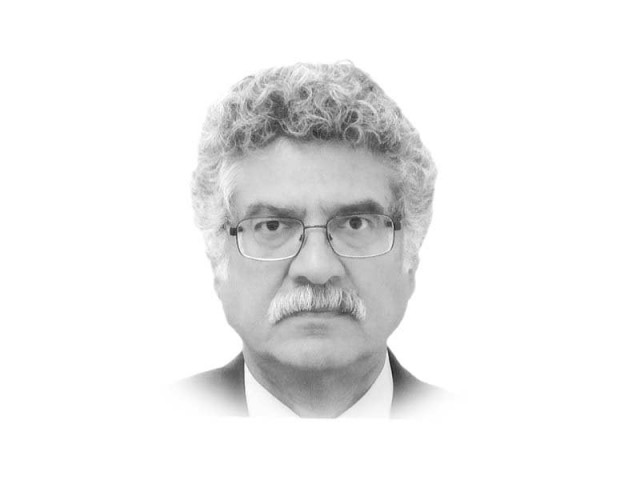The ‘Indo-Pacific’ and Pakistan
Chronology of events demonstrates China has been re-active rather than preemptive to safeguard its interest

The writer is a former ambassador of Pakistan and views expressed here are his own
Speaking on the change at the Shangri-La dialogue in Singapore organised by the International Institute of Strategic Studies (IISS), US Defence Secretary Mattis stated that “the role of the Indian Ocean with the largest democracy in the world coming to its own with economic progress there in India, we need to recognise that there is a growing significance to the Indian Ocean, to the Indian subcontinent, and certainly to India itself.” In a departure from its predecessor’s position, the Trump administration has now embraced this change even though American regional clients, Japan and Australia, have been referring to the ‘Indo-Pacific’ since 2016. This development, therefore, completes the formal induction of India into the ‘Quadrilateral Alliance’ along with the US, Japan and Australia. The ostensible purpose of the Quad, as it is commonly known, is to ensure “freedom of navigation, over flights and the peaceful settlement of disputes in accordance with international law,” to promote a “rules based order” in the region, ensured through partnership between democratic countries on the “basis of their shared values and interests.” Devoid of such sanctimonious double-speak, this amounts to ganging up against China.
Unwilling to accept China as an equal partner at the global level while itself declining in power due to self-inflicted wounds like Iraq and Afghanistan, the US has desperately promoted the Quad alliance to contain and confront a rising China. Others, such as Vietnam, the Philippines and Indonesia with maritime disputes in the South China Sea, have also been enlisted against Beijing.
The American presence in the ‘Indo-Pacific’ is not only justified on the grounds that the US has historically been a Pacific power but now, more than ever before, to “defend the interests of its allies” against an “aggressive and expansionist,” China. As alleged by General Mattis, China has undertaken “militarisation of artificial features in the disputed South China Sea, deployed anti-ship and surface to air missiles, electronic jammers and bomber aircraft.” He claimed that these Chinese measures were “tied directly to military use for the purpose of intimidation and coercion.” In response, according to Mattis, the US is “standing shoulder to shoulder with India, ASEAN and our treaty allies… to build an Indo-Pacific where sovereignty and territorial integrity are safeguarded.”
However, the chronology of events clearly demonstrates that China has been re-active rather than preemptive to safeguard its interests. Even as China-US relations were proceeding on their positive trajectory, in 2006, the Bush administration entered into a strategic partnership with India in order to promote that country as a counter-weight to China. Its conventional and strategic military build-up was encouraged and assisted, including development of Ballistic Missiles Defence, long-range missiles, submarine launched ballistic missile equipped nuclear powered submarines, among other high-tech weaponry. Concurrently, the US encouraged Japan’s revanchist Prime Minister Abe to reverse policy and engage in Japanese militarisation while also supporting him to revive the Senkaku/Diaoyu Islands dispute with China. In the South China Sea, the US instigated the Philippines, Vietnam and others to seek international arbitration for their maritime disputes with China while abandoning their ongoing bilateral dialogue with Beijing. In Obama’s ‘Asian Pivot’ policy, the US substantially increased its regional military presence, especially in Australia and Japan apart from its own regional bases. The ‘New Silk Road Initiative’ launched from India and the ‘Trans-Pacific Partnership’ trade pact were designed to exclusively exclude China. Official formation of the Quad by 2017 was the proverbial last straw because it can choke China’s sea lanes of communication, vital for 80 per cent of its trade, including oil imports. Therefore, if China is indeed flexing its regional muscle, it has good reason to do so.
Apart from its military modernisation, including naval projection, China has embarked on developing alternative routes to link up to the West, such as, the Belt-Road Initiative (BRI) of which CPEC is a lynch-pin, providing connectivity to the Persian Gulf through the Gwadar Port.
Not surprisingly, India and the US have not only opposed CPEC but are actively engaged in de-railing it. Concurrently, Trump has gone even further than Obama and Bush to help build up Indian conventional and strategic capabilities while fully endorsing India’s ambition of regional domination. In the words of General Mattis at the IISS conclave: “the US values the role India can play in regional and global security… based on a convergence of strategic interests;” and that “our partnership extends beyond the Indo-Pacific region, and we welcome India’s continued significant contribution to stability and re-construction in Afghanistan.” Evidently, Mattis had temporary amnesia about India’s role in supporting the TTP and Baloch militants against Pakistan from the Afghan soil.
Herein is the problem for Pakistan. American support for Indian hegemony to contain China confronts Pakistan with an existential threat. Not only is India engaged in a massive military build-up for power projection in South Asia and beyond in the Asia-Pacific, but also pursues doctrines that seek space for conventional war with Pakistan despite the existence of nuclear deterrence, as well as promoting terrorism at the sub-conventional level, against Pakistan. While Pakistan’s response has significantly reduced incidents of terrorism and its Full Spectrum deterrence has neutralised Indian ‘Cold Start’ doctrine, it still needs to develop capabilities to tackle emerging challenges. These include India’s role in the ‘Indo-Pacific’ that can threaten our maritime interests and use of nuclear powered submarines and overseas bases targeting our strategic assets. This requires, among other measures, development of our naval outreach capabilities as well as missiles with the required ranges.
Published in The Express Tribune, June 12th, 2018.
Like Opinion & Editorial on Facebook, follow @ETOpEd on Twitter to receive all updates on all our daily pieces.
















COMMENTS
Comments are moderated and generally will be posted if they are on-topic and not abusive.
For more information, please see our Comments FAQ